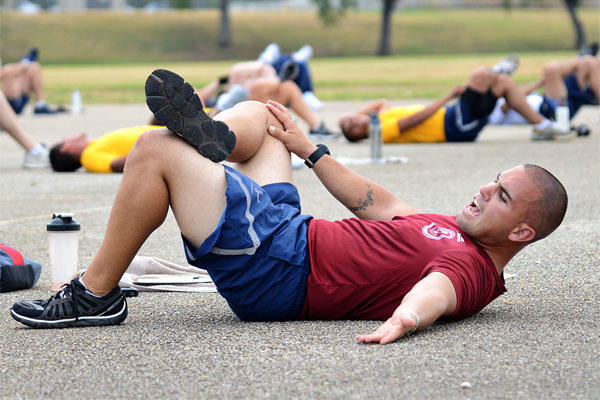[ad_1]
When recovering from a serious illness or situation that is causing pulmonary congestion or damage to the lungs, consider doing a slow and steady recovery period so you don’t potentially overload the heart or cause more lung tissue irritation.
Here is an emailed question from a forest firefighter who is having recovery issues with COVID-19 in addition to a busy fire season.
Hi Mr. Smith, I’ve had a long season on a hot-shot crew and a bad case of COVID and smoke inhalation. My illness caused me to lose 15 pounds that I didn’t need to lose and it just really wore my body down. I want to walk long, slow miles to improve my lungs and cardio base, but I also really want and need to gain weight and muscle to feel healthy. Any recommendations on how to proceed? Thanks steve
Steve, thank you for what you are doing to save communities by fighting fires. The double shot of COVID-19 and smoke inhalation is a significant double blow to the pit of the stomach after a tough season. There are several ways to prepare for the next fire season.
Both require steady, simple workouts to get back to where you need to be. Doing too much too early can slow progress, so patience and logical advancement are required. Don’t just jump back into “training like you used to” before you got sick.
1. Calisthenics and Easy Cardio
Think of this as a period of rebuilding and focus on the basics of mobility, gymnastics, and simple cardio in the fresh air. Try to avoid smoky areas if possible, or stay indoors on cardio machines if necessary.
Simple exercise followed by light cardio or walking, jogging, biking, elliptical training, rowing, or even swimming can help you rebuild your heart and lungs. Make sure you stick to the lower intensity scale, with a lower heart rate in the range of the maximum heart rate of 50% to 60%.
A basic of calisthenics and stretching is a great way to get moving and will make the transition to weightlifting a little easier. However, if you want to get into weight loss first, there is a way you can lift weights without overwhelming your rebuilding phase.
2. Another option: lift first
You can also choose to rebuild your body in the weight room first and work on building mass as your main goal. You can end any lifting workout with simple cardio exercise. I would especially recommend this option if your lungs are still buffeted and you have difficulty walking or climbing hills or stairs.
Whichever option you choose, make sure you eat to gain weight by adding more calories from good food (carbohydrates, proteins, fats). You can still gain muscle mass with calisthenics.
On upper body days, I would start walking or cycling. On leg days, add weight via backpack or weight vest and go. Build yourself into hiking hills over a couple of weeks to get your legs back under you for the next fire season.
Especially after a long period of serious illness, a basic bodybuilding and hypertrophy cycle is a great way to rebuild in a gym where you focus on body parts such as the chest, shoulders, triceps, back and biceps, legs, core or grip every day of the week can concentrate.
This is a great way to aid the recovery process and spread the intensity over the week rather than doing high-intensity full-body workouts while trying to rebuild your fitness foundation.
Either way will help you. I just prefer to rebuild my fitness foundation with a short four to six week cycle of calisthenics and progressive cardio. I follow that with a weightlifting cycle and that would be a good next step for you.
You can eventually get used to a powerlifting versus bodybuilding cycle once you feel like you are getting heavier and reducing the repetitions. Regardless, I’d still warm up with some calisthenics, followed by a lift, and then finish the daily workout with a simple cardio option that builds up for up to 30-45 minutes under a load like a backpack.
Related articles
Air pollution and running
Fire season and running outside
Stew Smith is a retired Navy SEAL and fitness writer who was certified as a Strength and Conditioning Specialist (CSCS) by the National Strength and Conditioning Association. Visit his Fitness eBook shop when you want to start an exercise program to create a healthy lifestyle. Send your fitness questions to [email protected].
Would you like to learn more about military life?
Whether you’re thinking of joining the military, looking for fitness and basic training tips, or keeping up to date on the life and benefits of the military, Military.com has it all. Subscribe to Military.com for military news, updates, and resources delivered straight to your inbox.
Read complete message
© Copyright 2021 Military.com. All rights reserved. This material may not be published, broadcast, rewritten, or redistributed.
[ad_2]

